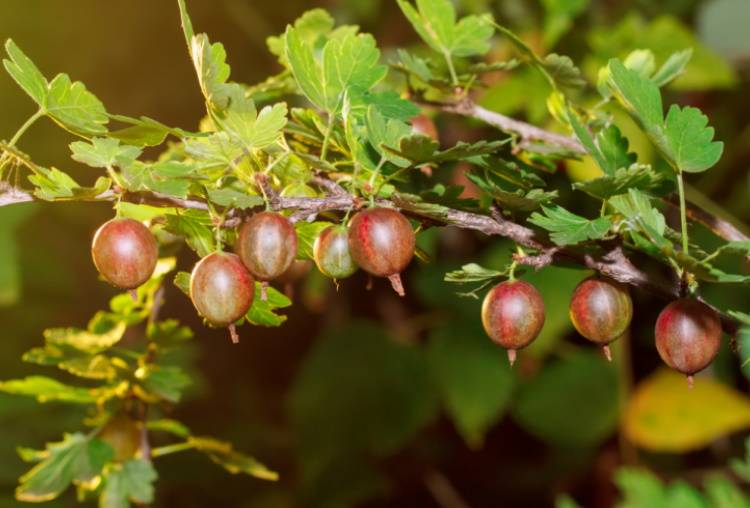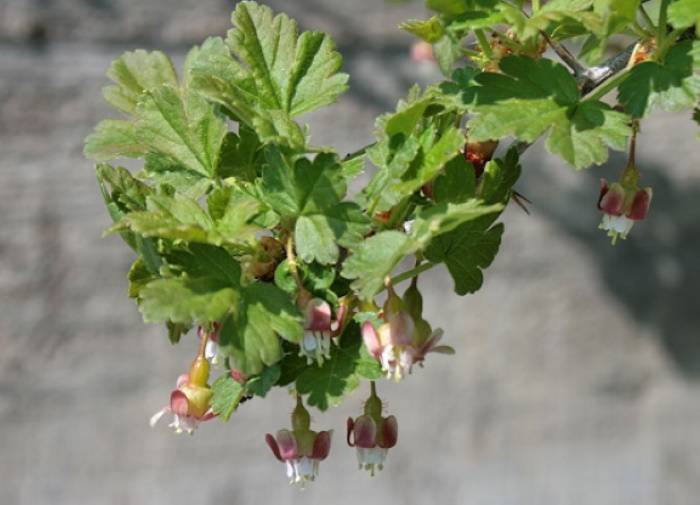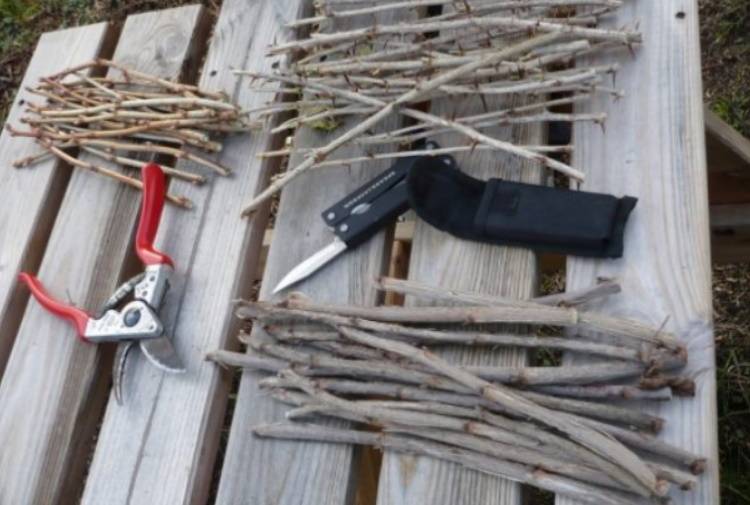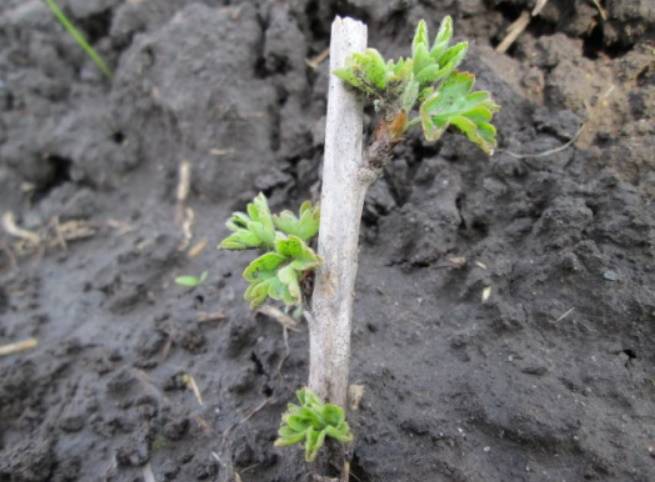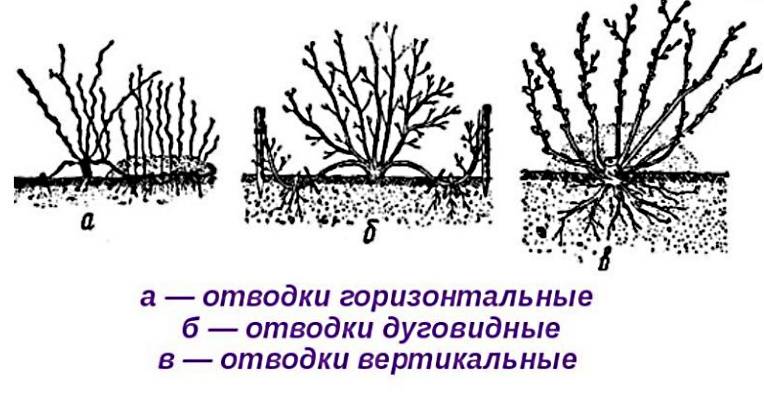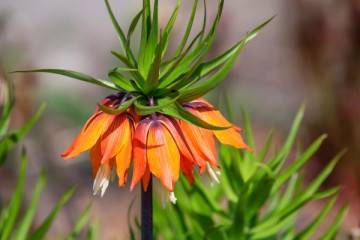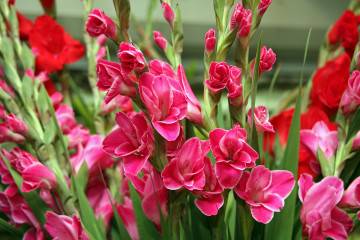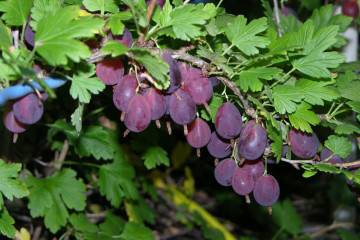How to propagate gooseberries in spring, summer and fall
Content:
Gooseberries are cultivated in all temperate areas. More than 1,500 different varieties have been created. Thorny berry kmouth are planted in garden plots not only to obtain a useful product. The shrub is also very popular as an early honey plant that attracts pollinating insects to horticultural crops. Experienced gardeners know that gooseberry propagation can be done in several ways.
How gooseberries reproduce
The question is how to propagate gooseberries, occurs when the spread of a particular plant species is required. Usually the most delicious and high-yielding berry varieties are planted. In ancient times in Russia it was called a cannon, and botanists gave it a Latin name Ribes uva-crispa.
Plant propagation methods include:
- propagation by green and lignified cuttings;
- gooseberry propagation by layering;
- dividing the bush;
- perennial branches;
- seeds.
Gooseberry propagation by cuttings
Result gooseberry cuttings is not always positive. According to the observations of gardeners, no more than 1/3 of the prepared cuttings take root. Therefore, before how to cut gooseberriesto, much more segments are harvested in advance than it is planned to plant in open ground. Rooting of cuttings is carried out in greenhouse conditions. Use green or lignified shoots, cut respectively in spring in May, summer and autumn in October.
How to propagate gooseberries by cuttings in summer
For cutting cuttings, choose healthy thickened bushes 3-5 years old, which are at the beginning of the growing season. Shoots are cut from plants, cut into pieces up to 15 cm long. At least 3-4 points of growth should remain on each segment. The lower cut should be oblique, make it at a distance of 2.5 cm from the lower kidney. The upper cut is made straight - 1.5 cm above the kidney.
Gooseberry cuttings in summer not much different from the autumn cutting of cuttings. After cutting, autumn cuttings are disinfected in a weak solution of potassium permanganate, wrapped in a damp piece of cotton cloth, a piece of newspaper, placed in a paper bag and stored during the winter in a dark, cool room with an air temperature of about + 5 ° C... Rooting of lignified cuttings begins at the end of February, at the beginning of March.
Green rooting can be carried out all summer, but no later than 2 months before the onset of cold weather. To improve the process of rooting, the lower parts of the cuttings are kept in a solution of a growth stimulator for 24 hours.
Preparation of soil and planting capacity
Fertile slightly acidic or neutral soils are suitable for growing gooseberries. The same soil composition is required for rooting cuttings.The soil mixture can consist of low peat, coarse sand and black soil or leafy garden soil. The soil must be roasted in the oven, and then spilled with Fitosporin-M solution to restore the vital activity of beneficial microflora.
Planting containers can be general and individual. They must have holes for water drainage. The height of the boxes can be small - up to 15 cm. Before placing the soil, the containers are washed in a disinfectant solution.
How to root gooseberry cuttings in soil
Root formation on gooseberry cuttings can take place directly in the planting trench without using planting boxes. In any case, the plants need to create greenhouse conditions. On autumn cuttings, before placing them in the ground, the incisions are renewed and kept for 5-6 hours in warm water.
The lower part of the cuttings (1/3 of the height of the entire segment) is deepened into moist soil at an angle. The soil around the cutting is compacted and spilled with water. The soil around the seedling must be constantly moistened.
Rooting cuttings in water
Cuttings are rooted in soft water that does not contain salts and impurities. It is better to use pre-stored melt or rainwater. A small volume of water is poured into the bottom of a transparent container. The ends of the cuttings should be sunk above the first lower bud. The container with cuttings is covered with a glass or transparent plastic cap (jar, bottle).
The mini-greenhouse is taken out into a well-lit room with an air temperature of +20 ° C. The length of daylight hours should be at least 12 hours. If necessary, use artificial lighting. The liquid is topped up to the original level as it evaporates.
After the first swollen buds appear on the upper part of the cuttings, the cap is removed, and the water continues to be added. The root shoots stimulate the green buds on the top of the segment. As the leaves grow, the water level in the container is increased.
Growing cuttings and replanting to a permanent place
Gooseberry cuttings that have taken root in water require growing in a mini-greenhouse if it is impossible to do this outdoors. Unfavorable conditions for growing in open ground are:
- average air temperature not exceeding +16 ° C;
- the difference between day and night temperatures is more than 5 ° C.
If climatic conditions permit, seedlings are grown in the open field. Two months after the beginning of the formation of the root system, young gooseberry bushes are transplanted to a permanent growing site. They choose a place on a hill, because closely located groundwater negatively affects the development of the plant.
Wood ash, potash and phosphorus fertilizers are added to the subsidence pit. The roots of the plant are sprinkled with a 2-3 cm layer of soil, the planting hole with a gooseberry bush is watered, after the earth subsides, a layer of soil is added and tamped.
How to propagate gooseberries by layering
Digging gooseberry stems (cuttings) into the ground is considered the most effective way to propagate shrubs. The procedure is carried out either in early spring, after the ground has thawed - before the start of sap flow in plant cells. Or in the fall, a month before the cold weather. Layers are chosen on bushes 3-5 years old.
Reproduction by apical layers
The natural bending of the top of the stem of the shrub sometimes leads to self-rooting of this part of the plant. This can happen after heavy snowfalls, when the stems fall to the ground under the weight of the snow, and then, under the influence of melt water, they are drawn into the top of the soil.
Plants and gardeners who want to breed this or that gooseberry variety do the same with the tops of the branches. A depression is being dug next to the bush. The top of the stem is bent to the moist soil, placed in a hole so that several buds remain above ground level, attached to the soil with a wooden pin, sprinkled with a layer of soil.
Propagation by horizontal layers
To root horizontal layers around the selected bush, grooves are prepared with a depth of 5-7 cm. The stems are bent down, placed horizontally in the grooves, pinned to the soil, do not sprinkle with earth. The tops of the bent stems of the plant are cut off. After fresh shoots appear on the cut stems pinned to the ground, the grooves are closed with nutritious soil.
As the length of the shoots increases, a layer of moist soil is added around them 2-3 times more. By autumn, the mother branch is separated from the parent bush and cut into as many parts as shoots have grown on it.
Reproduction by arcuate layers
Arcuate layers are the branches of a plant bent into a concave arc. They are pinned at the place of the fold to the bottom of the grooves with moistened soil, dug next to the mother bush. The grooves are immediately covered with soil. The upper parts of the shoots remain on the surface of the earth. In order for them to stand upright, they are tied to wooden pegs. The soil above the place of attachment of the layers is constantly moistened.
Gooseberry propagation by dividing the bush
The division of the bush is carried out in spring or autumn - at the time of transplanting an old plant to a new place. A bush of an old gooseberry is dug up, almost all branches are cut off from it, and 1-2-year-old shoots are left. The diseased and damaged parts of the root processes are removed.
With a sharp pruner, cut the bush into pieces, each of them should contain at least 2 young stems. The cuttings are planted in pre-prepared holes with fertile soil, spilled with water with the addition of fungicidal preparations. The use of Fitosporin-M solution will help protect plant roots from fungal infections.
Before planting in the hole, the roots of plants are soaked for 2-3 hours in a liquid with a root formation accelerator. This can be a 0.01% succinic acid solution, which can be prepared from pharmacy tablets or powder purchased from a garden store.
Reproduction by perennial branches
This method of obtaining new gooseberry seedlings is similar to the method of arcuate bending of cuttings to the ground. The difference is that before laying the layering in the ground, all lateral shoots are cut from the old branch.
Is it possible to propagate gooseberries by seeds
Seed propagation of gooseberries is carried out only in the case of breeding new varieties or hybrids of the plant. In amateur gardening, this method is not used, because it does not provide a guarantee of obtaining a new plant that fully inherits the qualities of the parent species.
Features of seasonal breeding
In the spring, for propagation of gooseberry bushes, you can use all the methods available to the gardener. In summer, the most often used method of cuttings and rooting of green shoots. In the fall, the old bushes are divided, apical and arcuate layers are prepared for rooting, lignified cuttings are cut for winter storage and rooting in the spring.
Both children and adults will be happy with gooseberry berries, and as you know, the best fruits are obtained in their own garden. You just need to choose suitable types of gooseberries and propagate them using one of the many methods.
